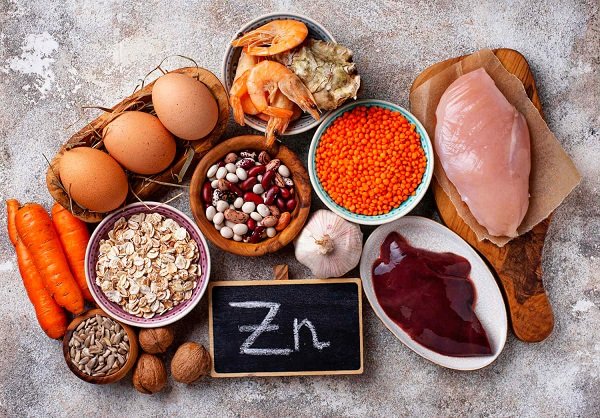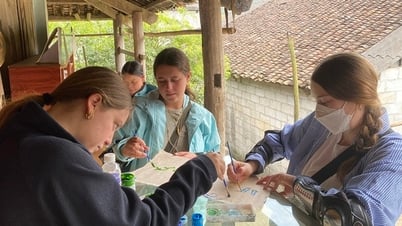Zinc is a trace mineral that is essential for children's development. Zinc deficiency in children can lead to many health risks.
With the role of synthesizing proteins by enzyme mechanism, zinc supplementation is a way to promote children's physical height development as well as maintain the activity of the immune system, helping children stay healthy and fight against dangerous pathogens.
Zinc plays an important role in preventing disease, helping to strengthen the immune system, and producing cells, from pregnancy to the child's later development.
Zinc affects protein synthesis in children's bodies, promotes cell division, and helps children grow taller.
In addition, zinc also helps maintain and protect taste and olfactory cells. Zinc deficiency affects the metabolism of taste cells, causing anorexia due to taste disorders.
Zinc also helps develop and maintain the effective functioning of the immune system, which is necessary for protecting the body against disease and helping wounds heal quickly. Zinc deficiency reduces the development and function of most immune cells, including T lymphocytes and B lymphocytes.

Loss of appetite, poor appetite... are typical symptoms when children lack zinc.
Causes of zinc deficiency in children
- Deficiency: Premature, low birth weight babies lack zinc in the womb, poor quality supplements, anorexia due to infection, prolonged intravenous nutrition...
- Due to rapid excretion: Diarrhea, profuse sweating.
- Due to anemia: Zinc and iron have almost the same distribution and origin in foods. Factors affecting the digestion and absorption of iron and zinc are also similar.
- Due to prolonged infections or congenital diseases related to zinc absorption and metabolism.
Signs of zinc deficiency
For young children, zinc deficiency is not too difficult to recognize because it directly affects health problems that mothers can easily see. Common signs of zinc deficiency in children:
- Anorexia, loss of appetite.
- Do not like to eat meat, fish.
- Mild constipation.
- Sleep is not deep, often tossing and turning at night, waking up many times.
- Weak hair that breaks easily, often suffers from respiratory diseases such as sore throat, bronchitis or digestive disorders...
- Slow growth in both height and weight.
In the long term, zinc deficiency in children will cause malnutrition and slow growth. When children are deficient in zinc, it will negatively affect their height, physical development, nervous system and immune system. Not to mention, if the child's body does not meet the zinc requirement, it will lead to stunted growth, reduced function of most immune cells, and the risk of infectious diseases.
Foods rich in zinc
For children under 6 months, the only source of zinc is breast milk. However, the amount of zinc in breast milk will gradually decrease over time. Therefore, mothers need to maintain the amount of zinc in milk as well as supplement zinc in their diet to avoid cases of zinc deficiency in infants.
For children 6 months and older, parents can supplement zinc for their children through food.
Supplementing zinc for children through food through daily diet is quite simple for families. To supplement zinc for children, parents need to pay attention to increasing foods rich in zinc, specifically:

Supplement zinc for children through food through daily diet.
- Oysters, shrimp, crab: These are the top seafood rich in zinc to meet the zinc needs of children. In addition, these seafood also provide the baby's body with enough protein, essential minerals and vitamins.
- Beans: Beans such as black beans, green beans, red beans, and white beans all have abundant zinc content. In addition, they are also a source of fiber and iron, which is beneficial for children's meals.
- Nuts: Nuts in general and especially 4 types of nuts: pumpkin seeds, cashews, peanuts, chia seeds help provide a large amount of zinc for children's bodies.
- Vegetables: Vegetables with the most prominent fiber content are also a potential source of zinc. Mothers should add mushrooms, broccoli and garlic to their children's meals to ensure that zinc needs are met.
- Milk and dairy products: Milk and dairy products are a source of calcium and also provide a significant amount of zinc for children.
- To help children absorb zinc best, they should supplement vitamin C from fresh fruits rich in natural vitamin C such as oranges, tangerines, lemons, grapefruits, etc.
Note, children at risk of zinc deficiency such as premature babies, fetal malnutrition, babies born to mothers with zinc deficiency, malnourished children... need to be examined and consulted by a pediatrician or nutritionist to receive proper and timely zinc supplementation.
Source: https://giadinh.suckhoedoisong.vn/dau-hieu-thieu-kem-thuong-gap-o-tre-va-cac-thuc-pham-giau-kem-172241206225632101.htm



































































































Comment (0)